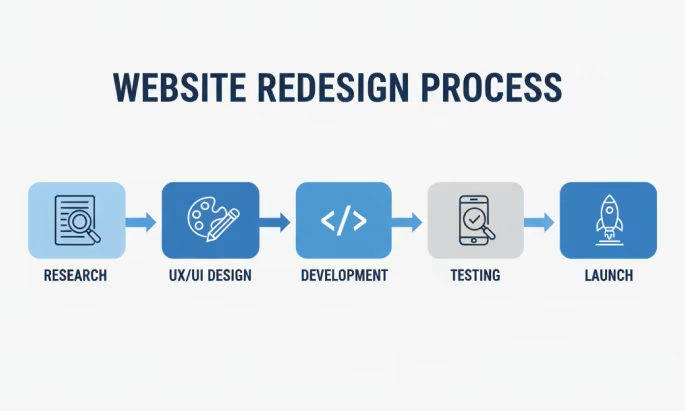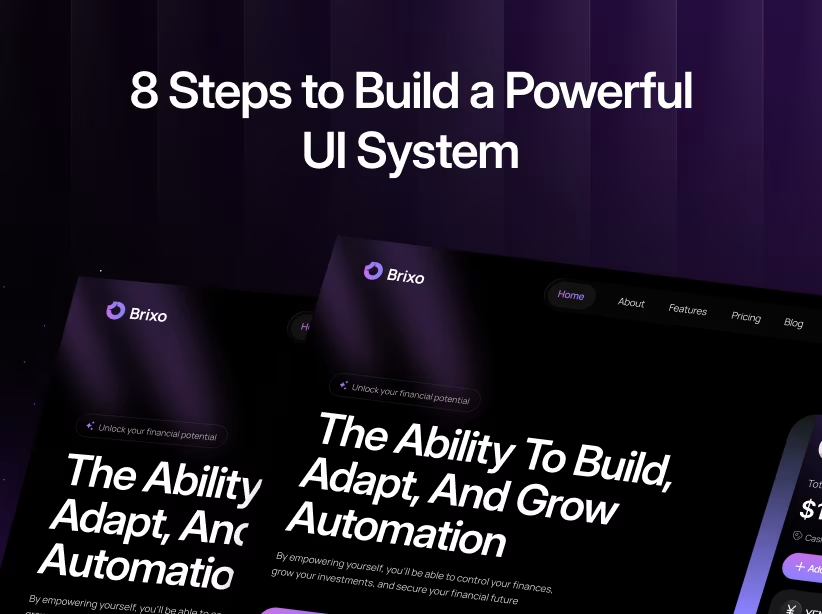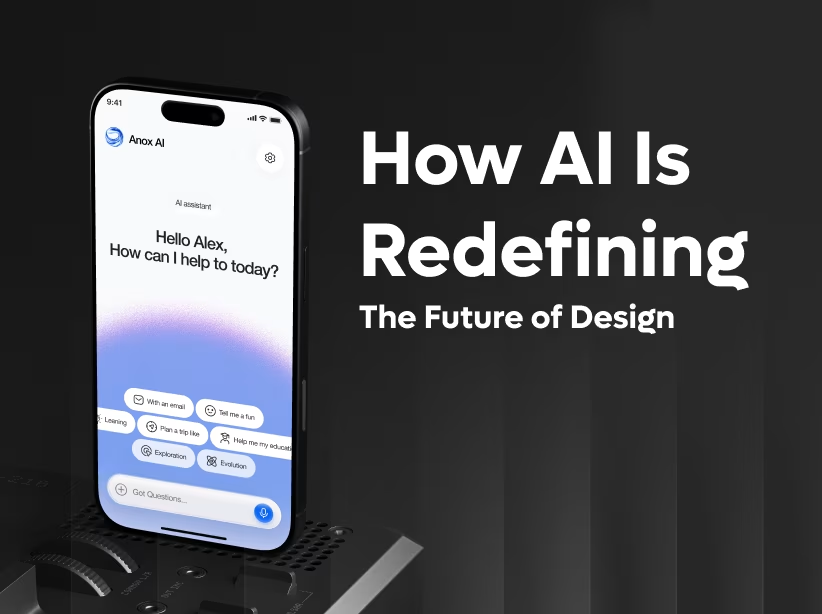
In 2025, a company’s website is much more than a digital brochure. It is the first point of contact for potential customers, a hub for digital marketing, and often a significant driver of revenue, leads, and brand perception. In a competitive market, businesses that fail to modernize their websites risk falling behind competitors who leverage superior user experience and technology. The decision to redesign a website is often strategic, balancing cost, functionality, and business growth potential.
Understanding website redesign costs can be challenging. Prices vary depending on project complexity, number of pages, UX/UI expectations, backend development, and additional integrations. Agencies like Orbix specialize in guiding clients through this process. Design-only projects typically start at $2,000–$5,000, covering essential page templates and responsive layouts. Clients requiring full development or additional screens see prices scale according to scope. Post-launch, Orbix offers ongoing UX improvements and security-focused updates, ensuring the website continues to deliver business value.
This guide will explore website redesign costs for 2025–2026, identify key factors affecting pricing, provide actionable insights, and share real-life examples, including Orbix’s experience working with businesses across industries.
What Is a Website Redesign?

A website redesign involves updating or rebuilding an existing site to improve aesthetics, usability, performance, and alignment with business objectives. There are two common approaches: a visual refresh and a full redesign. A visual refresh focuses on updating colors, typography, layout, and imagery. While this method can modernize a website quickly and affordably, it often does not address deeper technical or UX challenges.
A full redesign is a strategic, comprehensive project that addresses UX, site architecture, backend functionality, and scalability. This can include redesigning navigation, integrating new features, migrating to a modern CMS, and optimizing performance across devices. Full redesigns provide measurable business benefits, such as improved engagement, higher conversion rates, and better SEO performance.
Modern redesigns also incorporate mobile responsiveness, accessibility, and SEO best practices. Responsive design ensures that the website works seamlessly on all devices, while optimized code and fast load times improve search engine rankings and user retention. Orbix tailors redesigns to client needs, starting design-only projects at $2,000–$5,000. When clients request additional screens, full development, or integrations, the cost naturally scales. Post-launch, Orbix continues supporting clients with UX enhancements and security-related updates to maintain optimal performance.
Why Redesign Your Website?
Redesigning a website is about more than keeping up with design trends; it directly impacts business outcomes. A well-executed redesign improves user experience through clear navigation, intuitive workflows, and mobile optimization, which increases engagement and reduces bounce rates.
Brand credibility is another major benefit. A website that feels outdated can negatively impact trust, even for well-established brands. Conversely, a modern website reinforces professionalism and reliability, making it easier to attract and retain customers.
Redesigns also increase conversions by streamlining user flows and optimizing the placement of calls-to-action. For example, strategically designed landing pages and simplified checkout processes can result in higher sales, more sign-ups, and greater lead generation.
SEO performance is also enhanced through a redesign. Websites that load quickly, are mobile-friendly, and follow proper SEO practices achieve higher search rankings, which translates into increased organic traffic and reduced dependence on paid campaigns.
Scalability and security are further considerations. Upgrading CMS platforms, optimizing architecture, and implementing robust security protocols ensures that websites can grow with the business and withstand potential cyber threats. Orbix has observed these benefits firsthand. One mid-sized e-commerce client who requested a mobile checkout redesign and product page improvements experienced a 20% increase in conversion rates within six months. As the client added additional screens and development features, costs increased proportionally, and the post-launch support provided by Orbix ensured continued UX and security optimization.
Key Factors to Consider Before a Redesign
Before budgeting for a website redesign, businesses should carefully evaluate key factors that influence cost and scope. First, business goals must be clearly defined. Whether the goal is brand visibility, lead generation, e-commerce growth, or mobile optimization, the objectives should guide the redesign strategy.
Next, a comprehensive site audit is critical. Assess current website performance, including load times, bounce rates, navigation issues, and SEO metrics. This analysis identifies opportunities for improvement and helps avoid common pitfalls.
The project scope is another important factor. Determine the number of pages, unique templates, integrations, and custom features required. It is also crucial to plan for post-launch support, which includes content updates, UX refinements, security patches, and performance monitoring.
Orbix’s approach emphasizes thorough discovery and strategic planning. During the discovery phase, the team evaluates client goals, analyzes website performance, and maps out the project scope. Design-only projects start at $2,000–$5,000, covering core templates and responsive layouts. If a client requires additional screens or development work, the pricing scales accordingly. Post-launch, Orbix continues providing support for UX improvements and security updates, ensuring ongoing performance and reliability.
Website Redesign Pricing in 2025–2026
Website redesign costs vary depending on project complexity and size. Small websites or template refreshes typically range from $2,000 to $10,000. Medium-sized business websites can cost between $10,000 and $50,000, while large enterprise platforms with complex functionality can exceed $150,000. These estimates usually include design, development, content migration, performance optimization, and post-launch support. Geographic location, vendor type, and project timeline can further influence pricing.
Orbix offers flexible pricing structures. Design-only projects start at $2,000–$5,000 for core page templates and responsive layouts. Additional screens, custom development, and advanced integrations increase costs proportionally. This approach allows clients to pay for exactly what they need while receiving high-quality outcomes.
Breaking Down Costs: Design, UX, and Development

A successful website redesign comprises three main components: UI/UX design, technology and development, and content migration with SEO. UI/UX design encompasses wireframing, visual design, prototyping, and responsive layouts. High-quality UX directly impacts engagement and conversion rates.
Technology and development cover CMS setup, backend functionality, integrations, and responsive development for all devices. Content migration ensures that existing pages, metadata, images, and SEO elements are accurately transferred to the new site.
Orbix integrates real-world client requirements into each stage. Design-only projects typically start at $2,000–$5,000, and pricing scales with additional screens or development needs. Post-launch support, including UX refinements and security-focused updates, ensures websites continue to deliver performance and business value.
Responsive Design and Mobile Experience

Mobile-first design is essential in 2025. A responsive website ensures that content is accessible and functional across a wide range of devices and screen sizes. Improved mobile experiences increase engagement, boost conversions, and reduce bounce rates.
Orbix places significant emphasis on mobile optimization. Through device testing, layout adjustments, and interaction refinement, the agency ensures that websites perform seamlessly on smartphones, tablets, and desktops. Post-launch, Orbix provides UX adjustments based on user analytics and performance monitoring, ensuring mobile experience improvements are continuous.
Performance and Optimization
Website performance affects user experience, SEO, and conversion rates. Factors such as load speed, image optimization, caching, and clean code are critical to delivering a high-performing site. Websites that fail to address performance often struggle to generate ROI, despite strong visual design.
Orbix integrates performance optimization from the outset. This includes image compression, code minification, caching strategies, and accessibility improvements. Post-launch, ongoing monitoring and adjustments ensure that performance standards are maintained, reducing long-term maintenance costs and maximizing user satisfaction.
Digital Transformation and Advanced Features
Some redesigns are part of broader digital transformation initiatives. Integrating e-commerce functionality, CRM systems, analytics, or SaaS-like features increases complexity and cost. These features enhance business capabilities, but careful planning is required to prevent scope creep.
Orbix phases advanced features strategically, allowing clients to prioritize core functionality while planning for future enhancements. This approach ensures the website meets immediate business needs while remaining scalable for long-term growth.
Agency, Freelancer, or In-House Team
Choosing the right team affects both cost and quality. Freelancers typically offer lower rates but may have limited capacity and expertise. In-house teams provide control but require management resources and longer timelines. Agencies like Orbix offer a full-service approach with structured project management, clear pricing, and post-launch support, delivering high-quality outcomes efficiently.
Timeline and Its Effect on Cost
Typical redesigns for mid-sized websites take three to six months, while enterprise projects can take six to twelve months. Rushed timelines increase costs and risk technical debt. Orbix ensures realistic project timelines that balance quality, cost, and business objectives.
Maintenance and Ongoing Investment
Ongoing maintenance is essential to preserve website functionality, security, and performance. Hosting, security updates, content updates, and performance monitoring are ongoing expenses. Orbix provides post-launch services that address UX improvements, security-related adjustments, and performance optimizations, helping clients maximize the value of their redesign investment.
How to Reduce Costs Without Sacrificing Quality
Businesses can manage costs by prioritizing essential pages, reusing UI components, limiting unique templates, and phasing non-critical features. Orbix applies these strategies to help clients achieve high-quality results within budget. For instance, one client started with a $2,500 design-focused project and later expanded to include additional screens and development, with post-launch support ensuring ongoing UX and security improvements.
Measuring Post-Launch ROI
Monitoring metrics such as page load speed, bounce rate, mobile traffic, conversions, and SEO rankings allows businesses to measure the success of a redesign. Orbix clients often see measurable improvements, including higher engagement, increased mobile traffic, and improved conversions, demonstrating the tangible value of a well-executed website redesign.
Conclusion
A website redesign in 2025–2026 is a strategic business investment, encompassing design, development, mobile optimization, performance, and post-launch support. Agencies like Orbix offer flexible pricing starting at $2,000–$5,000 for design-only projects, scaling with additional screens or development features. Post-launch services, including UX refinements and security updates, ensure websites remain effective, secure, and high-performing. Planning carefully, selecting the right partner, and tracking ROI ensures that a website redesign contributes directly to business growth, brand credibility, and long-term success.
Faq
1. What factors influence website redesign costs?
Key factors include project scope, number of pages, UX/UI complexity, CMS and backend requirements, integrations, responsive/mobile optimization, SEO, and post-launch support. Geographic location, vendor type, and timeline also impact pricing.
2. What is included in a website redesign?
A comprehensive redesign typically includes UI/UX design, responsive layouts, backend development, content migration, SEO optimization, performance improvements, and post-launch support for UX and security updates. Orbix tailors each project to the client’s needs, ensuring a balance of cost and business value.
3. What is the difference between a visual refresh and a full website redesign?
A visual refresh focuses on updating the aesthetics, such as color schemes, typography, and images, without significant changes to site architecture or functionality. A full redesign is more comprehensive, addressing UX, navigation, backend systems, CMS, performance optimization, and scalability.
4. How long does a website redesign take?
The timeline depends on project complexity. Small websites or design-only projects can take 1–3 months, medium websites typically require 3–6 months, and large enterprise projects may take 6–12 months. Rushed projects can increase costs and risk technical debt.
5. Can Orbix provide post-launch support?
Yes. Orbix provides ongoing post-launch services, including UX improvements, security-related updates, and performance monitoring. This ensures the website remains high-performing, secure, and aligned with business objectives over time.
6. How can I reduce website redesign costs without compromising quality?
Prioritize essential pages and features, reuse UI components, limit unique templates, and phase non-critical features for later development. Working with a strategic agency like Orbix allows businesses to manage costs effectively while maintaining high-quality results.
7. What types of businesses benefit most from a redesign?
All businesses can benefit, but it is especially valuable for companies with outdated websites, growing e-commerce platforms, startups seeking credibility, and enterprises needing scalable, secure, and high-performing websites.
Fresh UI/UX Ideas, Straight to Your Inbox





